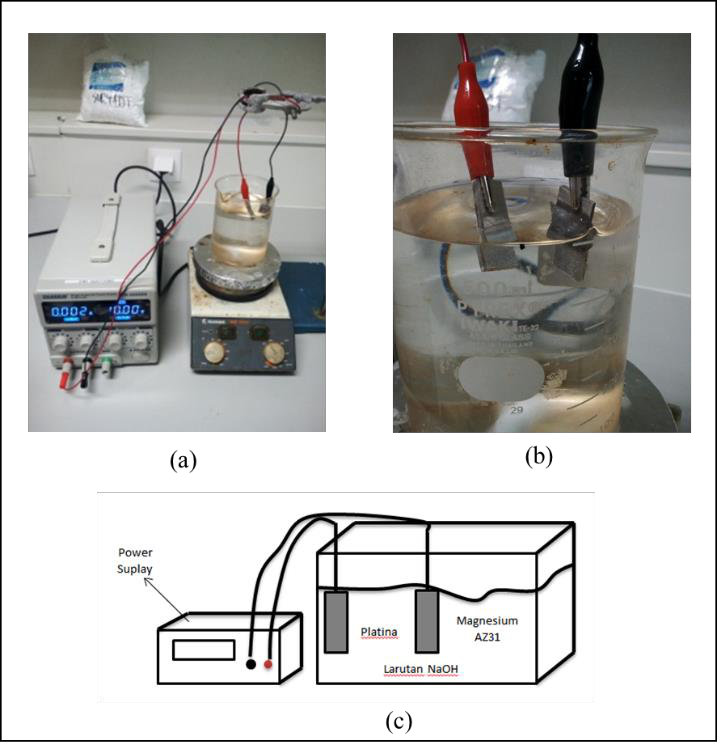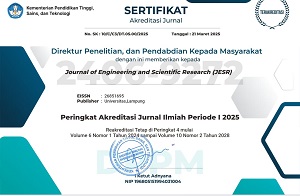The Effect of Sodium Hydroxide Concentration on Physical and Mechanical Properties of Magnesium AZ31 Coating for Biodegradable Bone Implant Application
DOI:
https://doi.org/10.23960/jesr.v5i2.148 - Abstract View: 270Abstract
Anodizing is a metal coating technique by converting a metal surface to form an oxide layer by electrolysis, one of which is to increase the hardness of a material. This research was carried out to know the effect of variations in electrolyte solution on the hardness of the coating resulting from the anodizing process. The electrolyte used is a solution of NaOH (Sodium Hydroxide) with a concentration of 1 M solution of 68% purity. The specimen used is magnesium AZ31, voltage 10 Volts, soaking time 10 minutes at room temperature. Based on the data analysis results, the magnesium layer's hardness value at 10 minutes at a voltage of 10 volts is 69 HV.In comparison, the coating thickness result at 10 minutes with a constant voltage of 10 volts is 6 ?m. While the concentration of the solution is 0.5 M, the purity is 68%. The specimen used is magnesium AZ31, voltage 10 Volts, soaking time 10 minutes at room temperature. Based on the results of data analysis, the hardness value of the magnesium layer at 10 minutes at a voltage of 10 volts is 67 HV. In comparison, the coating thickness at a time of 10 minutes with a constant voltage of 10 volts is 4 ?m. With variations in stress and time in different concentrations of the solution, there will be differences in the hardness value and thickness value of the AZ31 magnesium coating material.
Downloads







